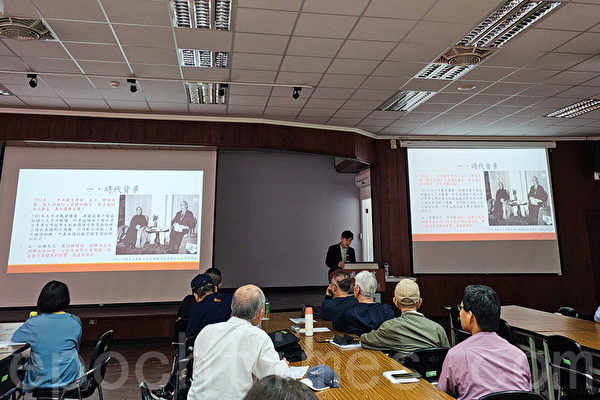On May 14, 2024, the National Museum of Taiwan History held a lecture event where Chen Song-min, assistant editor of the Museum, shared insights on the training process of Republic of China Air Force cadets in the United States during World War II (1941–1945). These cadets trained in the United States later became important figures in the Republic of China Air Force, greatly influencing the development of Taiwan’s air force.
During the event, Museum Director Chen Yi made a speech emphasizing the significance of understanding how Taiwan’s defense system post-World War II evolved, especially regarding the pivotal role the United States played in shaping the Republic of China Air Force. The collaboration and training between the USA and the Republic of China had a profound impact on Taiwan’s air force modernization.
Chen Yi pointed out the importance of studying the relationship between the United States and the Nationalist government in the post-World War II era, as documented in the National Defense Ministry’s publication commemorating the 60th anniversary of the 823 Battle, underscoring the foundation of Taiwan-US relations.
According to Chen Song-min, the aviation branch of the military emerged after World War I due to its speed and coverage on the battlefield. While Western countries like England and France quickly developed their air forces, the Republic of China lagged behind and sought assistance from foreign advisors. In the 1930s, foreign consultants from Germany, the United States, Italy, and the Soviet Union were engaged in shaping the modernization of the Chinese Air Force.
In 1937, amidst the Second Sino-Japanese War, the Central Aviation School relocated to Kunming, Yunnan, and was renamed the “Air Force Officer School” in 1938. As the Pacific War erupted in 1941, the United States sought the Republic of China’s assistance in stabilizing the Pacific theater by training Chinese cadets in the United States to operate new American aircraft and ground support equipment. This led to a new era of aviation education for both countries.
The cadets sent to the United States received American flight training and piloted modern aircraft to enhance China’s domestic air force strength. The program focused on establishing a capable Chinese air force to bolster combat capabilities.
Upon their return, these pilots not only introduced American aviation knowledge but also contributed to the establishment of the Chinese-American Composite Wing (CACW), which greatly benefited modern Chinese aviation education. Many of these cadets later became key figures in the Republic of China Air Force, significantly impacting Taiwan’s air force development.
The American aviation education influenced the integration and establishment of Chinese aviation education institutions. Under the guidance of American advisors, the Central Aviation School implemented educational programs, specialized training, and performance evaluation systems, significantly shaping the modern Republic of China Air Force education system. From November 1941 to the end of World War II in 1945, a total of eight groups of Chinese students completed their training in the US and returned to China to establish modern aerial combat tactics and advance aviation medical research.
After World War II, the influence of the Chinese-American Composite Wing persisted. Eugene Strickland recalled his visit to Taiwan in 1953, where he witnessed the efficiency of the Republic of China Air Force, fully adopting the operational procedures developed by the Chinese-American Composite Wing.
With the conclusion of World War II, the Republic of China Air Force relocated to Taiwan. The cadets who trained in the United States became key figures in Taiwan’s air force, with many leading important roles. Their contributions to the defense of Taiwan were significant, setting examples for generations to come. Leaders like Hsu Huan-sheng, Su Tu-fu, and Kuo Ju-lin, who were part of the Chinese-American Composite Wing, served as Air Force Commanders. Additionally, graduates like Lai Ming-tang, Hsia Kung-chun, Yi Fu-en, Du Kaimu, Wang Meng-chuan, Kuan Chen-min, and Huang Hsiang-chun played crucial roles in safeguarding Taiwan.

